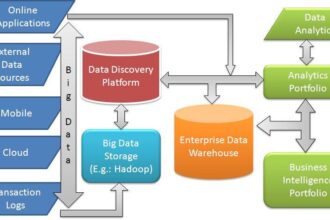IT organizations have spent enormous sums of money over the past 10-15 years attacking productivity. They’ve acquiring data integration tools, implemented improved development methodologies, and even reengineered requirements gathering methods to ensure business priority alignment. And the result of all of this investment? Today’s data integration developers are easily 10x to 20x more productive than the COBOL programmers of the past. This shouldn’t be a surprise to anyone – writing, compiling, linking, and testing 3rd generation code is much slower than today’s GUI-based, drag-and-drop development tools. The tools work; developers are faster, quicker, and better.
So, why does it still seem to take an eternity and cost a fortune to acquire and integrate new data into an existing report? The bottleneck has moved upstream: finding and extracting source data is complicated and time consuming. We’ve invested in our Integration Competency Centers to create an assembly line to streamline the process of transforming and converting data that is loaded into databases or applications. Unfortunately, we’ve not devoted any effort in simplifying access or understanding the actual raw source data that feeds the assembly line.
Henry Ford didn’t invent the assembly line, he revolutionized it. One of the changes that he introduced to the assembly line was simplifying and standardizing parts and the actual assembly process. Prior to Ford’s assembly line, car assembly was a custom effort that required highly trained craftsmen to shape, tool, and fit parts by hand (in a very time consuming process). The parts weren’t always uniform, so the craftsmen had to spend a significant amount of time fitting the parts together.
In most IT environments, source system access and data content varies across the different application systems dramatically. This forces developers to become data craftsmen in order to deal with the data idiosyncrasies associated with the numerous source systems common to most companies. Every system stores data in a custom and unique manner; it takes a lot of time to search and analyze source system data in order to identify the necessary content. (A popular ERP package stores its details in more than 10,000 tables) So, each new request often requires developers to create “from scratch” code to access and manipulate new data from a source system. If you dig a bit, you’ll probably find that many of your application systems generate dozens or hundreds (yes, hundreds) of custom extracts to deliver data to support the various production business needs within your company.
While most folks might think that custom extracts are a reasonably decent solution, they’re not. In fact, they’re a problem that will only get worse with time. (Remember, every extract requires development time and ongoing support.) You’ll be better off consolidating all of those extracts into a single set that includes all of the data. This will reduce processing time, reduce storage, reduce maintenance, and ultimately save a lot of money. You’ll have to spend some time designing and building these new extracts and getting folks to migrate to using them, but the benefits will be significant. (One of my clients was able to defer a platform upgrade due to the CPU and storage reduction caused by the consolidation and removal of all of the custom extracts).
Standardizing source data to reduce the data craftsmen problem isn’t rocket science, but it’s more than simply creating a data dump or generating a backup file. You need to deliver data in a manner that can be quickly and easily consumed by other systems. This means that the content needs to be reformatted from the unique (sometimes indecipherable) format of the host application into a format that everyone else can use. This can be easily addressed by delivering data into database tables or flat files (I know one client that delivers data in tab delimited spreadsheet format). The data should reflect the values generated by the source system in a format that everyone can understand – the content shouldn’t be modified for cleansed (this is source data, not content ready for business consumption). Delivery should occur in a frequent and regular basis along with a plan for archiving a decent amount of history.
This isn’t a new concept; this was a common approach in the days when custom coded IBM mainframe applications were all the rage. Back then, data sharing was a priority and every application generated standard extracts to reduce I/O and storage costs. There was also an extreme sensitivity to developer time. Requesting a custom extract was frowned upon and rarely approved. Finding and accessing the data was as simple as referencing the extract files that were made available from every application system.
When it comes to improving the delivery speed of new data to business users, maybe we can learn something from Henry Ford and the world of mainframe development.








